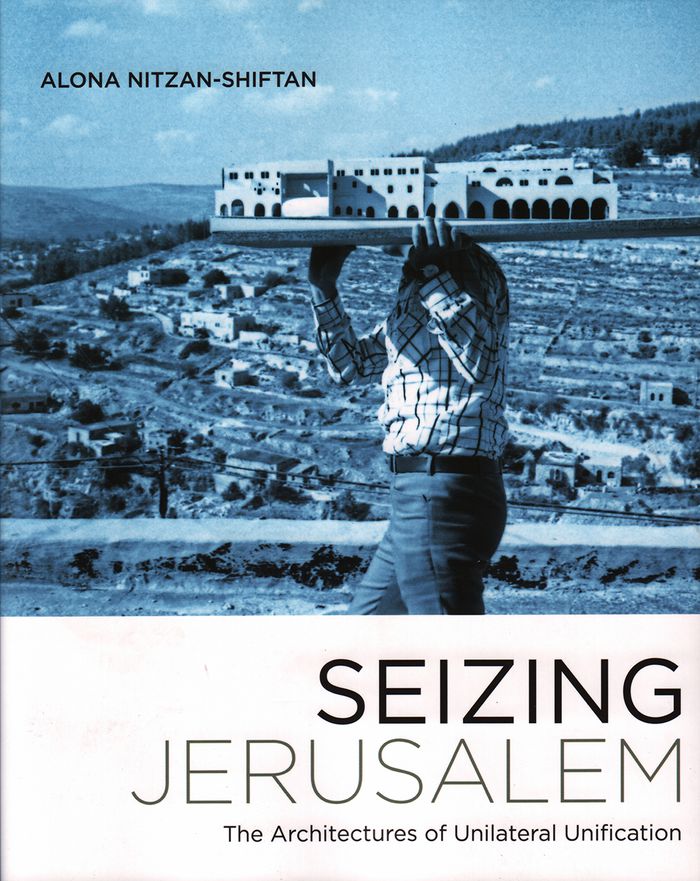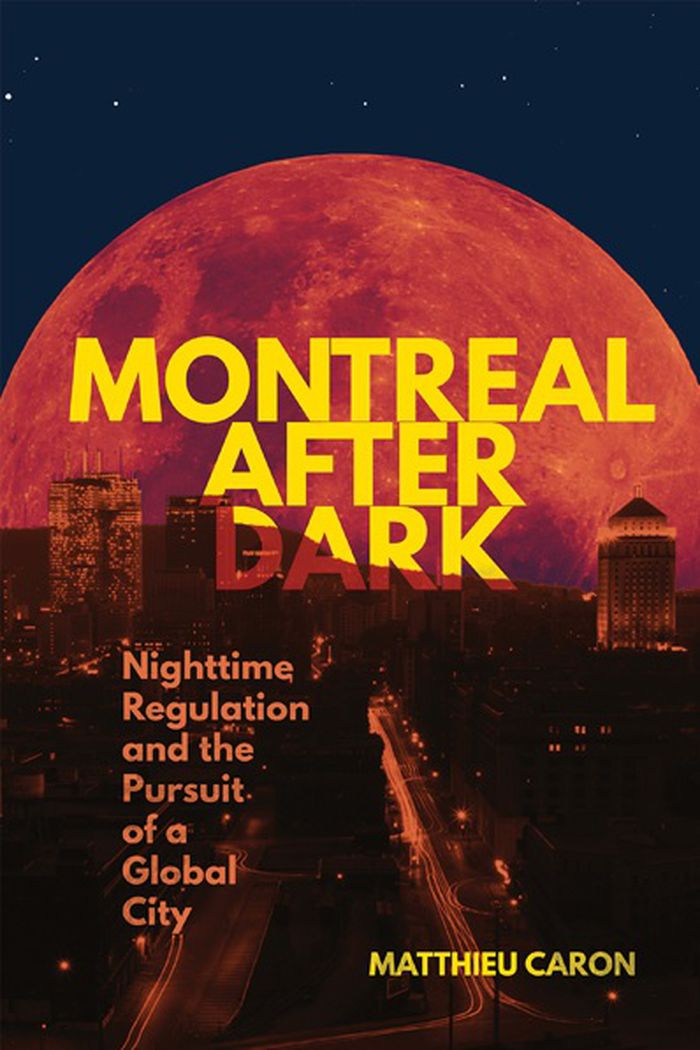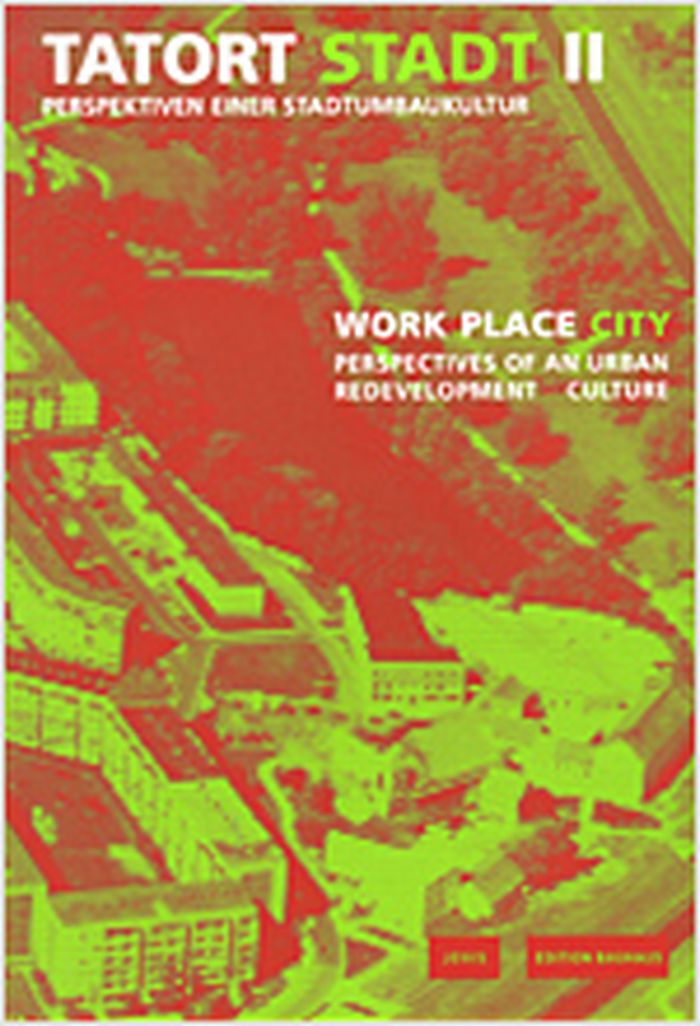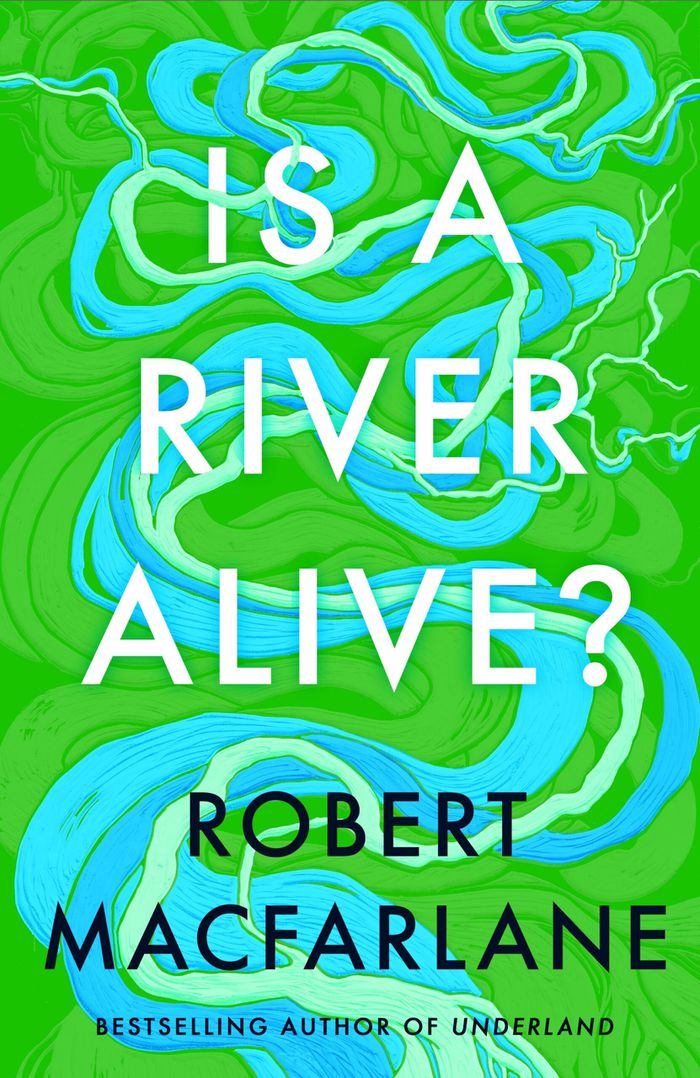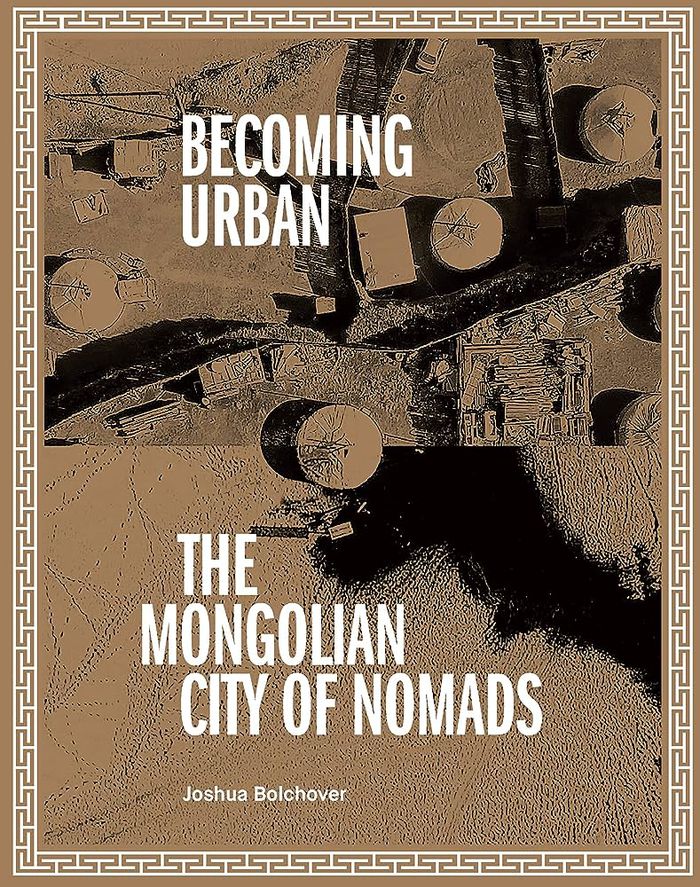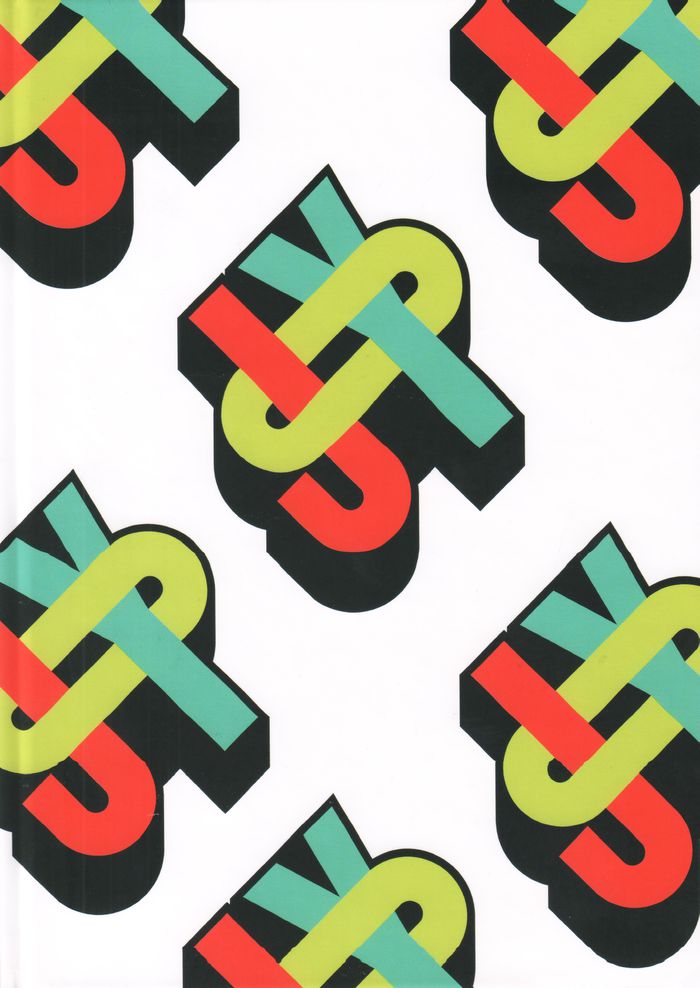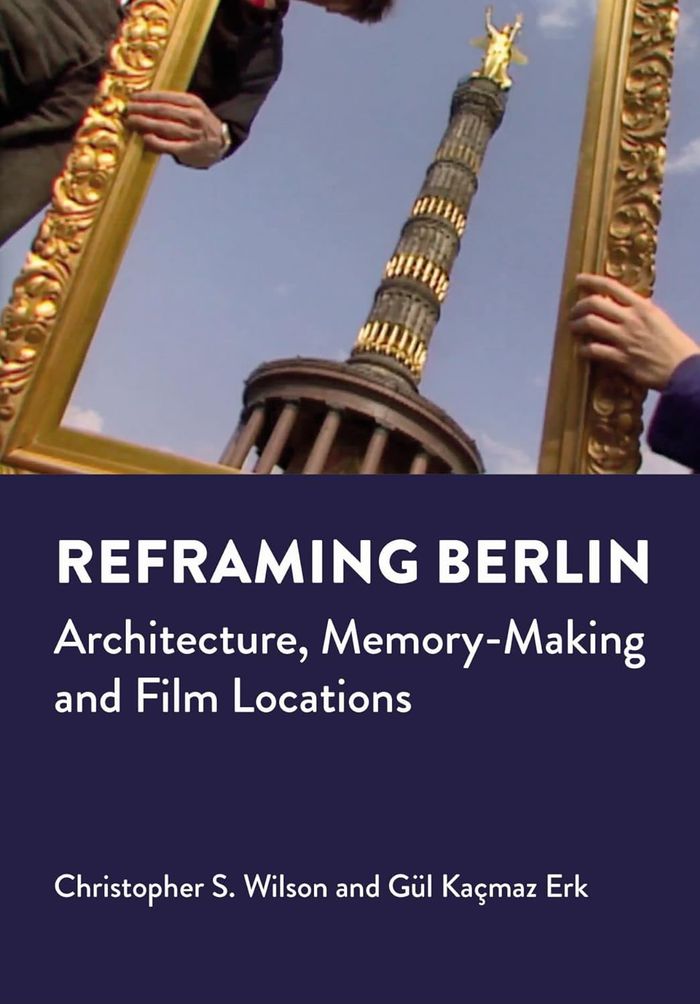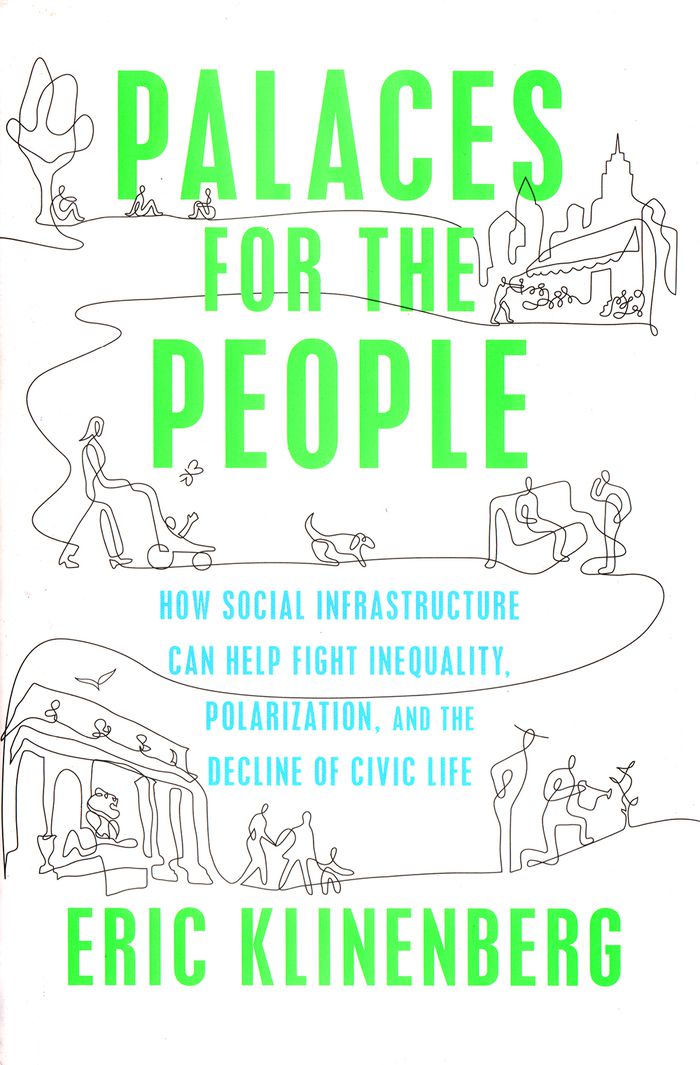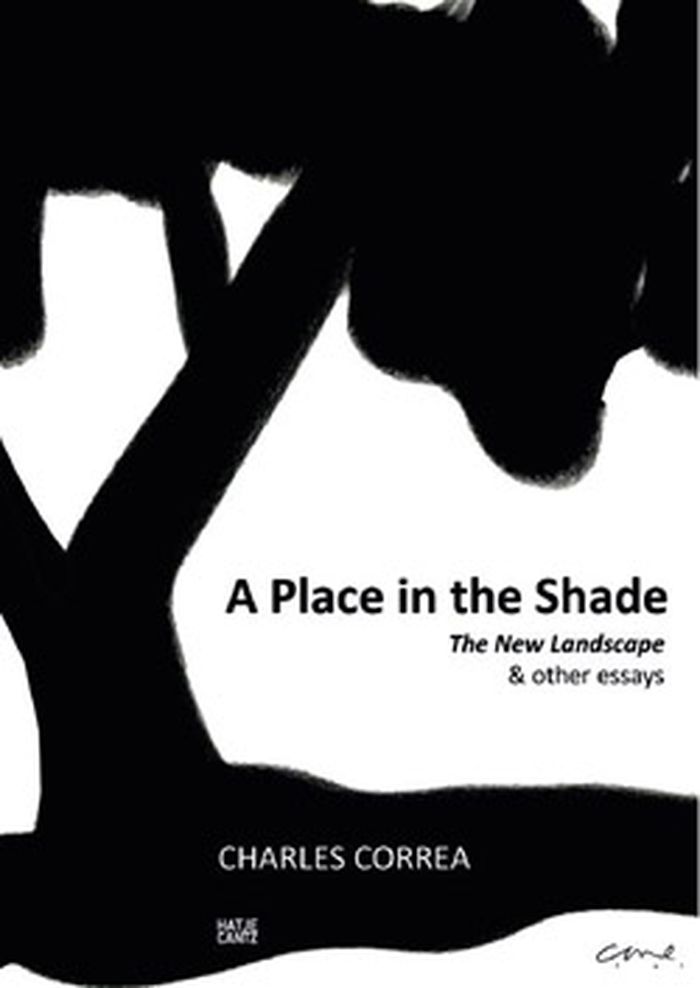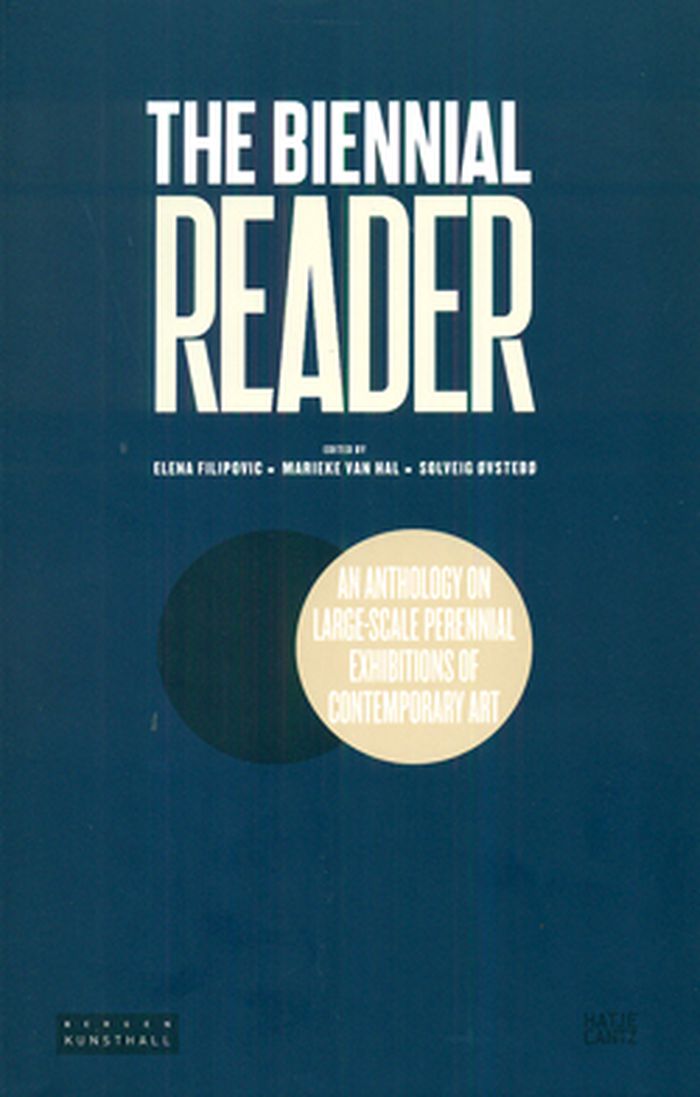$58.95
(available to order)
Summary:
After seizing Jerusalem's eastern precincts from Jordan at the conclusion of the Six-Day War in 1967, Israel unilaterally unified the city and plunged into an ambitious building program, eager to transform the very meaning of one of the world's most emotionally charged urban spaces. The goal was as simple as it was controversial: to both Judaize and modernize Jerusalem.(...)
Seizing Jerusalem: the architectures of unilateral unification
Actions:
Price:
$58.95
(available to order)
Summary:
After seizing Jerusalem's eastern precincts from Jordan at the conclusion of the Six-Day War in 1967, Israel unilaterally unified the city and plunged into an ambitious building program, eager to transform the very meaning of one of the world's most emotionally charged urban spaces. The goal was as simple as it was controversial: to both Judaize and modernize Jerusalem. Seizing Jerusalem, the first architectural history of "united Jerusalem," chronicles how numerous disciplines, including architecture, landscape design, and urban planning, as well as everyone from municipal politicians to state bureaucrats, from Israeli-born architects to international luminaries such as Louis Kahn, Buckminster Fuller, and Bruno Zevi, competed to create Jerusalem's new image. This decade-long competition happened with the Palestinian residents still living in the city, even as the new image was inspired by the city's Arab legacy. The politics of space in the Holy City, still contested today, were shaped in this post-1967 decade not only by the legacy of the war and the politics of dispossession, but curiously also by emerging trends in postwar architectural culture.Drawing on previously unexamined archival documents and in-depth interviews with architects, planners, and politicians, Alona Nitzan-Shiftan analyzes the cultural politics of the Israeli state and, in particular, of Jerusalem's influential mayor, Teddy Kollek, whose efforts to legitimate Israeli rule over Jerusalem provided architects a unique, real-world laboratory to explore the possibilities and limits of modernist design--as built form as well as political and social action. Seizing Jerusalem reveals architecture as an active agent in the formation of urban and national identity, and demonstrates how contemporary debates about Zionism, and the crisis within the discipline of architecture over postwar modernism, affected Jerusalem's built environment in ways that continue to resonate today.
Arch Middle East
$34.95
(available in store)
Summary:
Sex and jazz, liquor and gambling: Montreal in the early twentieth century was a city that offered an exceptional nighttime scene in North America. By mid-century that scene came under scrutiny, and Montreal’s influential mayor Jean Drapeau would be elected for the first time on a reformist platform that promised to end corruption. Over more than three decades, Drapeau(...)
Montreal after dark: nighttime regulation and the pursuit of a global city
Actions:
Price:
$34.95
(available in store)
Summary:
Sex and jazz, liquor and gambling: Montreal in the early twentieth century was a city that offered an exceptional nighttime scene in North America. By mid-century that scene came under scrutiny, and Montreal’s influential mayor Jean Drapeau would be elected for the first time on a reformist platform that promised to end corruption. Over more than three decades, Drapeau would endeavour to transform Montreal into a world-class global city by regulating its nightlife. "Montreal after dark" chronicles the spaces where nighttime regulations were enforced and contested. City authorities understood the night as enabling disorder, and they reorganized policing and crafted bylaws to gain control over it. Police and politicians mutually reinforced each other’s drive to morally cleanse the urban landscape, especially for international events like Expo 67 and the 1976 Olympics.
Architecture de Montréal
$29.95
(available to order)
Summary:
All urban dwellers have seen them: vacant apartment blocks, blighted business districts, destitute streets, industrial wastelands. Exurban growth has led to shrinking cities, a perennial problem. Grappling with this change, both philosophically and practically, is the purpose of this illustrated collection of essays, a rich resource for the generation of architects,(...)
Work place city : perspectives of an urban redevelopment culture
Actions:
Price:
$29.95
(available to order)
Summary:
All urban dwellers have seen them: vacant apartment blocks, blighted business districts, destitute streets, industrial wastelands. Exurban growth has led to shrinking cities, a perennial problem. Grappling with this change, both philosophically and practically, is the purpose of this illustrated collection of essays, a rich resource for the generation of architects, engineers, and urban planners who must face the decay. The contributions by a range of politicians, scholars, and planners arose out of the series of "Tatort Stadt" ("Work Place City") events, conferences, and exhibitions sponsored by the German government and the Bauhaus Dessau Foundation (the research and design center carrying forward the Bauhaus legacy). Exploring both current and proposed projects, these approaches recognize the need for structural change, acknowledging that urban redevelopment requires much more than demolition.
Urban Theory
Is a river alive?
$39.00
(available in store)
Summary:
At the heart of "Is a River Alive?" is a single, transformative idea: that rivers are not mere matter for human use, but living beings, who should be recognized as such in both imagination and law. Macfarlane takes the reader on a mind-expanding global journey into the history, futures, people and places of the ancient, urgent concept. Around the world, rivers are dying(...)
Is a river alive?
Actions:
Price:
$39.00
(available in store)
Summary:
At the heart of "Is a River Alive?" is a single, transformative idea: that rivers are not mere matter for human use, but living beings, who should be recognized as such in both imagination and law. Macfarlane takes the reader on a mind-expanding global journey into the history, futures, people and places of the ancient, urgent concept. Around the world, rivers are dying from pollution, drought and damming. But a powerful movement is also underway to recognize the lives and the rights of rivers, and to re-animate our relationships with these vast, mysterious presences whose landscapes we share. The young "rights of nature" movement has lit up activists, artists, law-makers and politicians across six continents—and become the focus for revolutionary thinking about rivers in particular.
Landscape Theory
$41.00
(available in store)
Summary:
This book positions Ulaanbaatar as a unique case and one that allows us to view our urban world differently. Operating as a primordial soup of emerging conditions, Ulaanbaatar is conceived as an incubator for alternative urban concepts. The book rejects the agency of the masterplan as an effective tool in emerging urban conditions and instead positions the framework as a(...)
Becoming urban: City of nomads
Actions:
Price:
$41.00
(available in store)
Summary:
This book positions Ulaanbaatar as a unique case and one that allows us to view our urban world differently. Operating as a primordial soup of emerging conditions, Ulaanbaatar is conceived as an incubator for alternative urban concepts. The book rejects the agency of the masterplan as an effective tool in emerging urban conditions and instead positions the framework as a tool for incremental urbanism. Although specific to the Ger districts of Mongolia, the story of how people, communities, planners, and politicians are grappling with the effects of becoming urban remains one of the critical issues facing the 21st century. How this process will be materialized and organized spatially, and by whom, will have profound ramifications on the climate and the social and economic make-up of our future cities.
Rurality
$33.95
(available in store)
Summary:
Cities have always been the source of invention, resilience, tolerance and prosperity. Given our current and unprecedented need for all these things, how can we start creating better cities? Scott Higgins, President of HIP Developments and writer/creative director Paul Kalbfleisch, invite you to join a new discussion about the role cities play in our lives. This book(...)
The Joy Experiments : Starting a new conversation on city building
Actions:
Price:
$33.95
(available in store)
Summary:
Cities have always been the source of invention, resilience, tolerance and prosperity. Given our current and unprecedented need for all these things, how can we start creating better cities? Scott Higgins, President of HIP Developments and writer/creative director Paul Kalbfleisch, invite you to join a new discussion about the role cities play in our lives. This book offers an honest dialogue for politicians, citizens, architects, city planners, and business leaders to come together and create a model for building communities that reflects the needs of our souls and future. This book does not shy away from big issues, big ideas or big hopes. It is a form of musings and a notebook from two people who, in the trenches of experimentation, are trying to improve the connection between citizens and their cities.
Humans and cities
$219.95
(available in store)
Summary:
Concerned with the connection between the built environment and the passage of time, ''Reframing Berlin'' uses film locations in the city to reveal the influence that urban transformation has on memory-making. Covering the city’s history since the beginning of cinema, the book proposes the term urban strategy to understand the range of consequential actions taken by(...)
Architecture and Film, Set Design
March 2023
Reframing Berlin: Architecture, Memory-Making and Film Locations
Actions:
Price:
$219.95
(available in store)
Summary:
Concerned with the connection between the built environment and the passage of time, ''Reframing Berlin'' uses film locations in the city to reveal the influence that urban transformation has on memory-making. Covering the city’s history since the beginning of cinema, the book proposes the term urban strategy to understand the range of consequential actions taken by politicians, developers, and other powerful figures to shape the nature and future of buildings, streets, and districts. Organizing these strategies from demolition to memorialization, the authors study the ways these actions forget or recall aspects of place. Using cinematic representations of Berlin as an audiovisual archive, the study details how the city has adjusted to its traumatic twentieth-century history through architectural transformations. Two dissimilar case studies frame each strategy, indicating that an approach that works for one building may not be sufficient for another.
Architecture and Film, Set Design
$37.00
(available to order)
Summary:
We are living in a time of deep divisions. Americans are sorting themselves along racial, religious, and cultural lines, leading to a level of polarization that the country hasn't seen since the Civil War. Pundits and politicians are calling for us to come together, to find common purpose. But how, exactly, can this be done? In ''Palaces for the People'', Eric Klinenberg(...)
Palaces for the people: how social infrastructure can help fight inequality
Actions:
Price:
$37.00
(available to order)
Summary:
We are living in a time of deep divisions. Americans are sorting themselves along racial, religious, and cultural lines, leading to a level of polarization that the country hasn't seen since the Civil War. Pundits and politicians are calling for us to come together, to find common purpose. But how, exactly, can this be done? In ''Palaces for the People'', Eric Klinenberg suggests a way forward. He believes that the future of democratic societies rests not simply on shared values but on shared spaces where crucial, sometimes life-saving connections, are formed. These are places where people gather and linger, making friends across group lines and strengthening the entire community. Klinenberg calls this the ''social infrastructure'': When it is strong, neighborhoods flourish; when it is neglected, as it has been in recent years, families and individuals must fend for themselves.
Urban Theory
$55.00
(available to order)
Summary:
Charles Correa’s A Place in the Shade explores architectural and urban issues in India, from the house as a machine for dealing with the country’s often hostile climate to the metaphysical role of architecture as a “model of the cosmos.” This provocative and eminently readable collection of essays argues that the country’s habitat must respond to the overriding parameters(...)
A place in the shade : the new landscape & other essays
Actions:
Price:
$55.00
(available to order)
Summary:
Charles Correa’s A Place in the Shade explores architectural and urban issues in India, from the house as a machine for dealing with the country’s often hostile climate to the metaphysical role of architecture as a “model of the cosmos.” This provocative and eminently readable collection of essays argues that the country’s habitat must respond to the overriding parameters of climate, culture and financial resources, and that our physical environment should accommodate both diversity and synergy. Over the last few decades, urban real estate has become the primary source of financing for political parties and the politicians who run them, and as Correa acknowledges, “you cannot look at cities without wandering into architecture on the one hand and politics on the other.” This book identifies the defining issues of the urbanization trends that are so rapidly transforming India.
Landscape Theory
The Biennial reader
$61.00
(available to order)
Summary:
Born as a vehicle for national propaganda, the art biennial today has become an outsize phenomenon mobilizing not only artists, curators and gallerists but sponsors, celebrities and politicians, commanding huge press attention and deciding the careers of artists worldwide. For a city to host a biennial today has colossal ramifications. This anthology on the art biennial(...)
The Biennial reader
Actions:
Price:
$61.00
(available to order)
Summary:
Born as a vehicle for national propaganda, the art biennial today has become an outsize phenomenon mobilizing not only artists, curators and gallerists but sponsors, celebrities and politicians, commanding huge press attention and deciding the careers of artists worldwide. For a city to host a biennial today has colossal ramifications. This anthology on the art biennial gathers previously published seminal texts from around the world alongside commissioned contributions from the leading scholars, curators, critics and thinkers today--among them Carlos Basualdo, Daniel Buren, John Clark, Okwui Enwezor, Bruce Ferguson, Milena Hoegsberg, Ranjit Hoskote, Caroline A. Jones, Jakouba Konaté, Gerardo Mosquera and Rafal Niemojewski. Tracing the genealogy of the standard exhibition format and examining some of the most famous examples of the twentieth and twenty-first century this reader explores the artistic, theoretical, and political ambitions of such large-scale exhibition projects.
Museology
